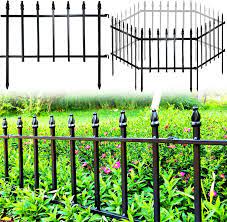Over and above their real positive aspects, fences hold symbolic value, embodying ideas of management, identification, and social norms. As guardians of your limit between open public and individual realms, fences reflect ethnic ideals and condition human relationships. Right here, we discover the nuanced definitions related to fences (ploty) ences as well as their long lasting relevance in modern culture.
1. Acquisition and Limitations:
fences (ploty) symbolize acquisition, delineating places that belong to people or areas. By demarcating borders, fences assert control over territory and assert residence rights. With this sense, fences act as concrete expressions of sovereignty and autonomy, reinforcing feelings of that belongs and bond for the territory.
2. Personal privacy and Closeness:
Within an increasingly interlocked entire world, fences offer sanctuary from external scrutiny, encouraging intimacy and personal privacy inside of enclosed areas. Residential fences, for example, generate hidden retreats where folks can unwind, make friends, and go after leisure time pursuits without the fear of intrusion. By delineating individual internet domain names, fences conserve autonomy and private autonomy, taking care of connections and encouraging a feeling of stability.
3. Societal Divisions and Inclusion:
When fences supply protection and security, they also perpetuate interpersonal divisions and exclusions. Great wall surfaces and barbed wire fences can denote exclusivity and elitism, segregating areas along socioeconomic collections. On the other hand, reduced fences and open up gates promote inclusivity and neighborly connections, bridging divides and encouraging social cohesion. The design and exposure of fences mirror root potential dynamics and social behaviours towards inclusion and exclusion.
4. Environmental Impact:
The proliferation of fences has enviromentally friendly ramifications, adjusting ecosystems and disrupting wildlife corridors. In rural scenery, comprehensive fencing can fragment habitats, impeding the movement of wild animals and exacerbating biodiversity reduction. Nevertheless, eco-helpful fencing choices, for example wild animals-helpful designs and permeable obstacles, offer you alternatives that equilibrium human requirements with environmental efficiency, minimizing the environmental footprint of fences.
5. Ancient and Social Significance:
During record, fences have enjoyed crucial roles in shaping human being communities and scenery. From old fortifications to colonial enclosures, fences have already been devices of conquest, colonization, and territorial control. In social contexts, fences feature prominently in literature, craft, and folklore, symbolizing themes of break up, confinement, and liberation. Learning the traditional and social contexts of fences improves our gratitude with their symbolic definitions and long lasting legacy.
In conclusion, fences work as a lot more than actual barriers they embody complex narratives of acquisition, security, societal dynamics, and ecological stewardship. As icons of restrictions and belonging, fences condition human being experiences and reveal the ideals and aspirations of communities previous and present. Appreciating the symbolic need for fences improves our understanding of the created environment and our romantic relationship with the territory.



